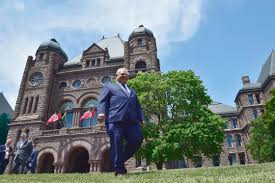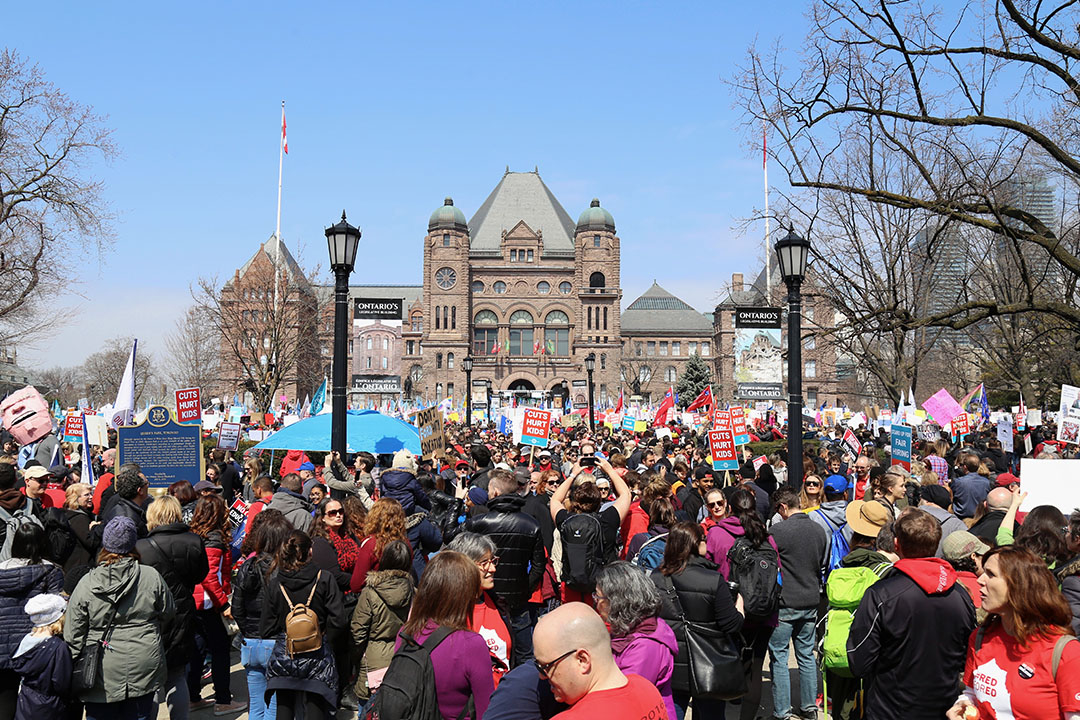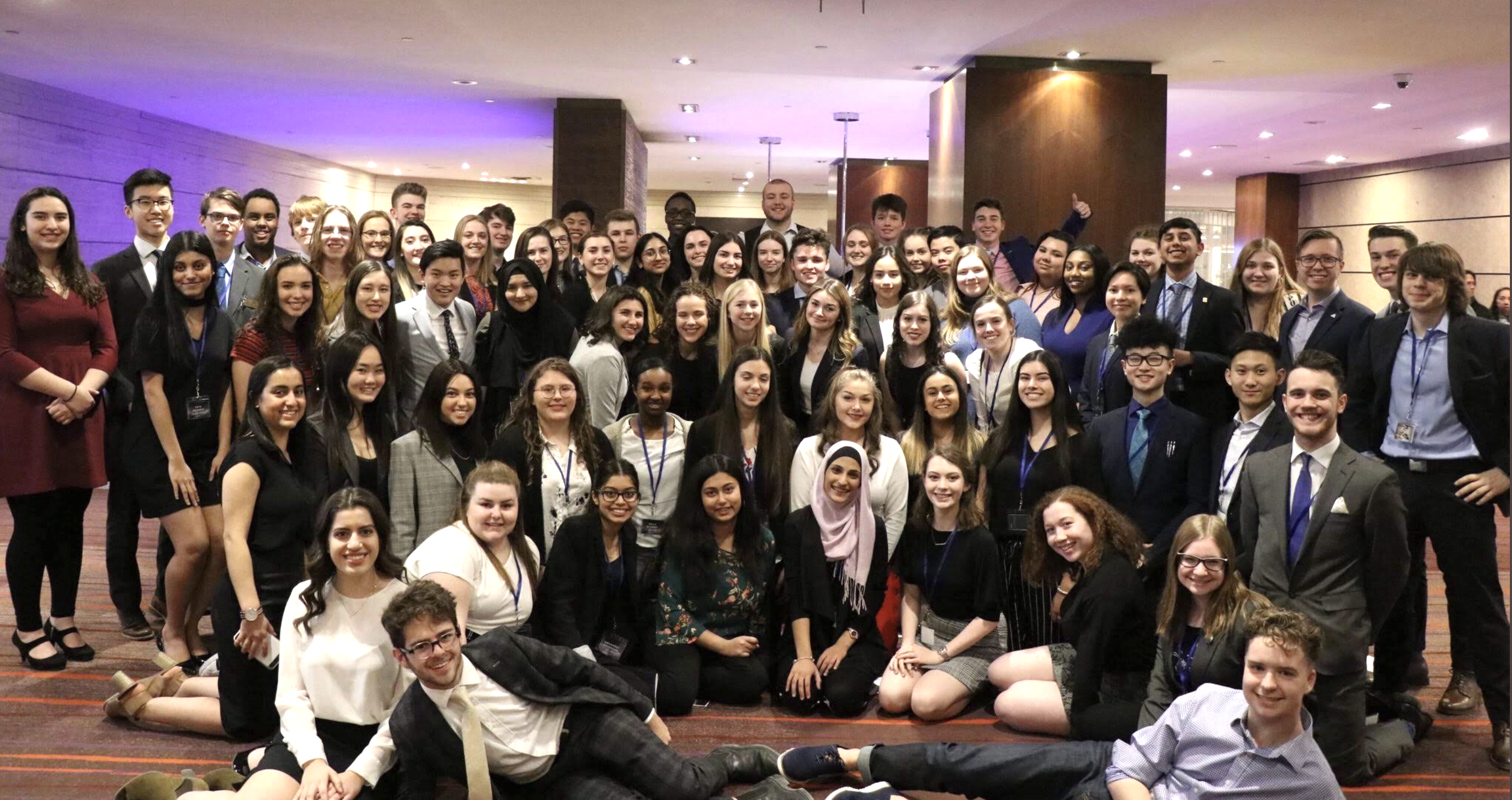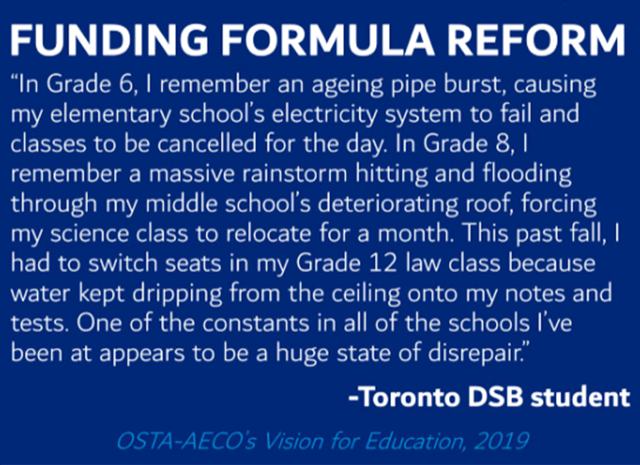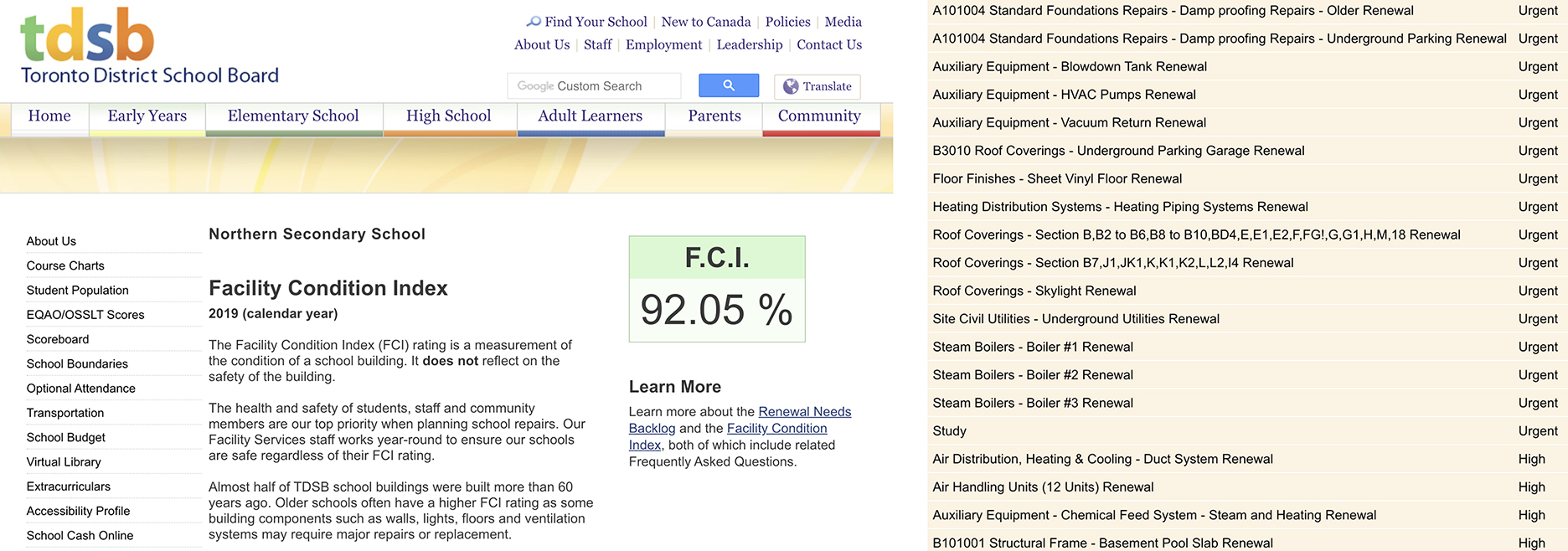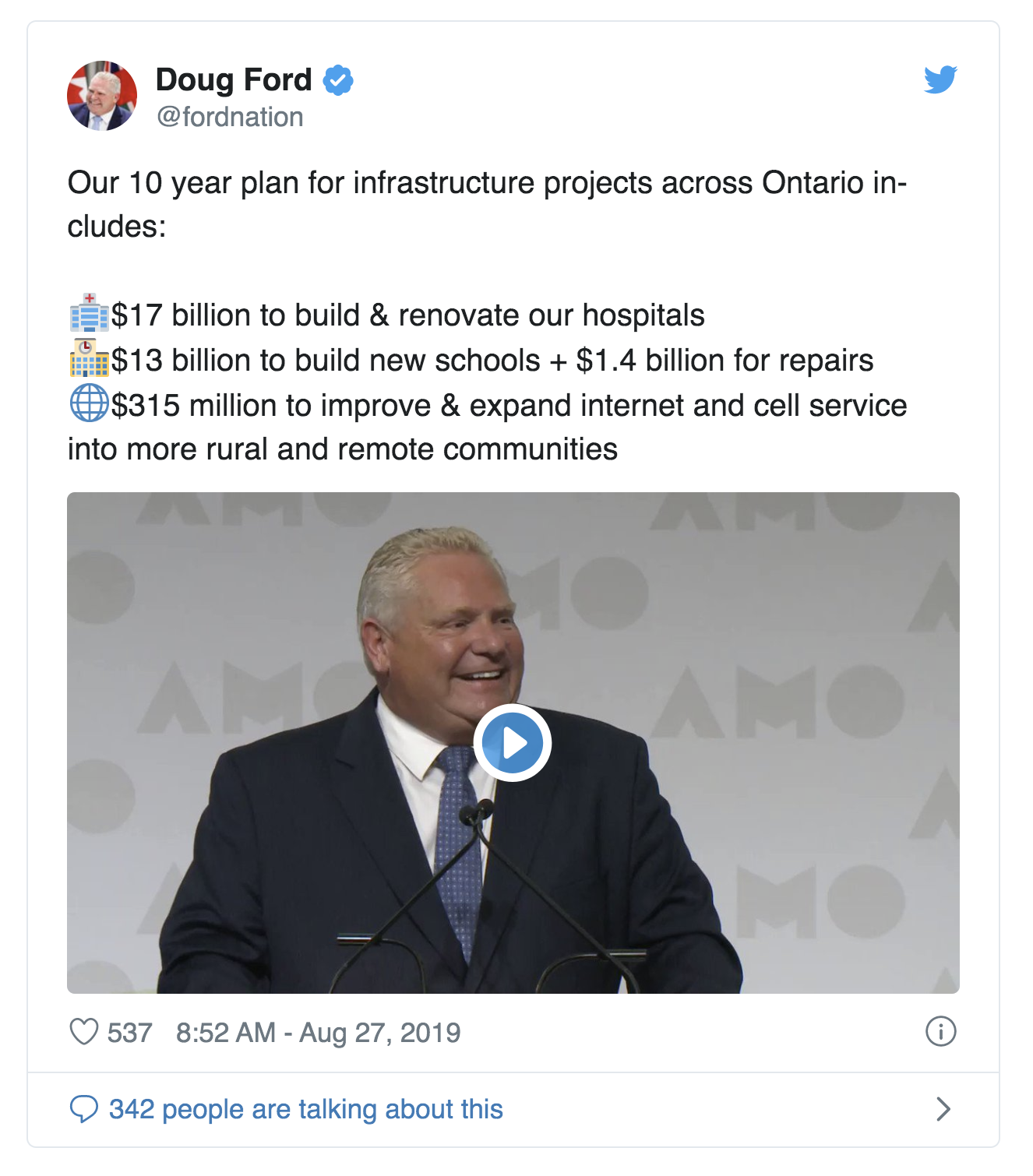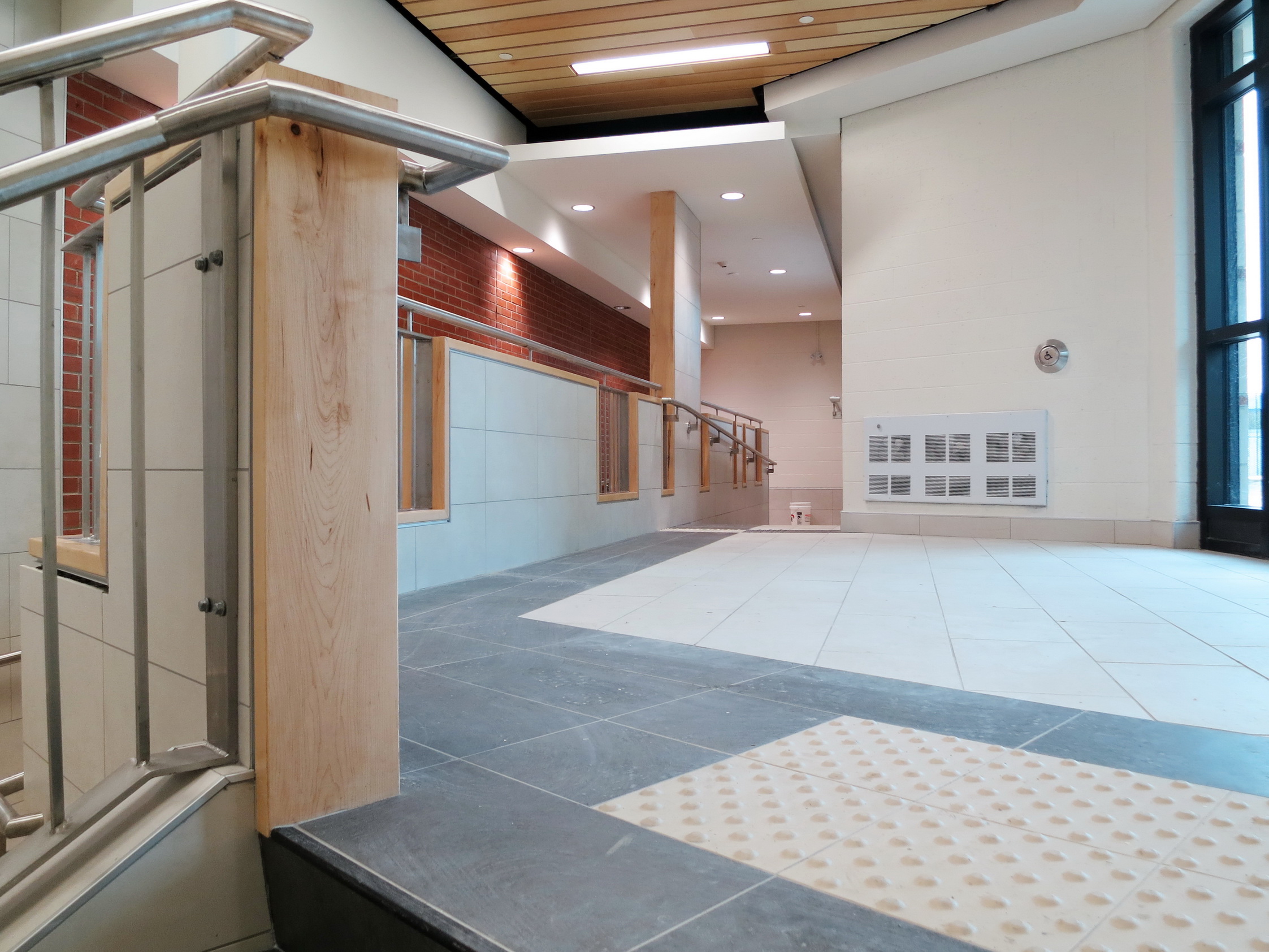Fix Our Schools co-founder Krista Wylie was interviewed by Press Progress this week about the inconsistent numbers being used by Education Minister Stephen Lecce, when it comes to his government’s commitment to funding school repairs, renewal and builds.
The following article, entitled “Questions Remain About the Ford Government’s School Repair Funding” raises some concerning disconnects on the figures being bandied about by Minister Lecce and Premier Ford about their funding commitment to ensuring Ontario’s publicly funded schools are safe, healthy and well-maintained.
Questions Remain About the Ford Government’s School Repair Funding
While the Ford government continued the previous government’s school repair and renewal funding for the 2019-20 year, its 10-year pledge is lower than previous ones and less than what’s needed to address disrepair in Ontario’s school system, critics say.
Facing resistance from parents and educators over plans to raise class sizes and cut education funding, the Ford government frequently cites school capital funding as proof it’s “committed” to education.
Last week, for example, Education Minister Stephen Lecce told the legislature:
The Premier has demonstrated a firm commitment to improving education by putting more money in the system than ever before. He’s committed to that, because we’ve doubled the mental health envelope in this province. We’ve invested more to improve schools—a $550-million renewal to build new schools and improve existing schools.
And, on Nov. 7 the minister said:
It is this government that is investing over $13 billion over the next decade to improve schools
But, the minister also said on Nov. 7:
What I also made clear is that we’re maintaining a $1.4-billion allocation to maintain our schools. After 15 years of dereliction of duty, where we had a multi-billion-dollar backlog that we inherited, we must do more to improve our schools.
The government’s pledges have been uneven.
For example, if the government were to continue spending $1.4 billion per year, as it did in 2019-20, on “funding to support the repair and renewal of school facilities,” it would seemingly come to a ten-year total of $14 billion — not $13 billion.
Krista Wylie, Fix Our Schools Campaign Co-Founder, told PressProgress that also falls short of the previous government’s commitment of $16 billion, over ten years, to renewals, repairs and new builds. “The $13 billion target is a $3 billion cut from what the Liberals promised. And even if you don’t include new school building in that $16 billion amount, it is still less than $1.4 billion per year.”
Wylie said, further, “the representatives of the government we spoke to were not able to give us a good explanation for that. Their finance and accounting folks said they could not say more than $13 billion — because that’s all there was allocated.”
Economist Hugh Mackenzie told PressProgress “It is a cut relative to the previous plan. And that, in turn, falls far short of what would be needed to address the school condition problem.”
The current backlog for school repairs reportedly sits around $16.3 billion. Mackenzie said “ongoing depreciation means that renewal expenditures equal to between 2% and 4% of the value of the buildings will be required annually. And those expenditures will be required, even if the current maintenance backlog were somehow eliminated. ”
On Nov. 6, Lecce told the legislature the government has committed to a “2.5% allocation when it comes to renewal.”
Asked by PressProgress if the government is committed to maintaining its current $1.4 billion annual investment, or the previous government’s $16 billion commitment, or the $16.3 billion estimated repair backlog, the ministry of education did not respond.

